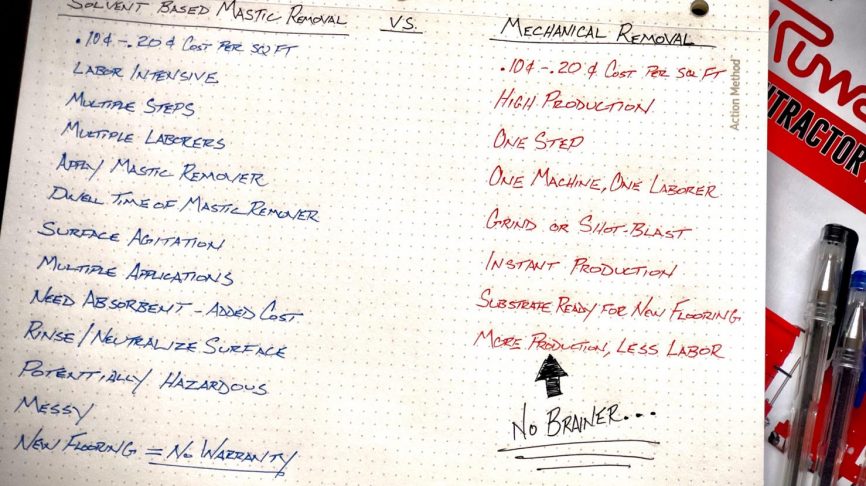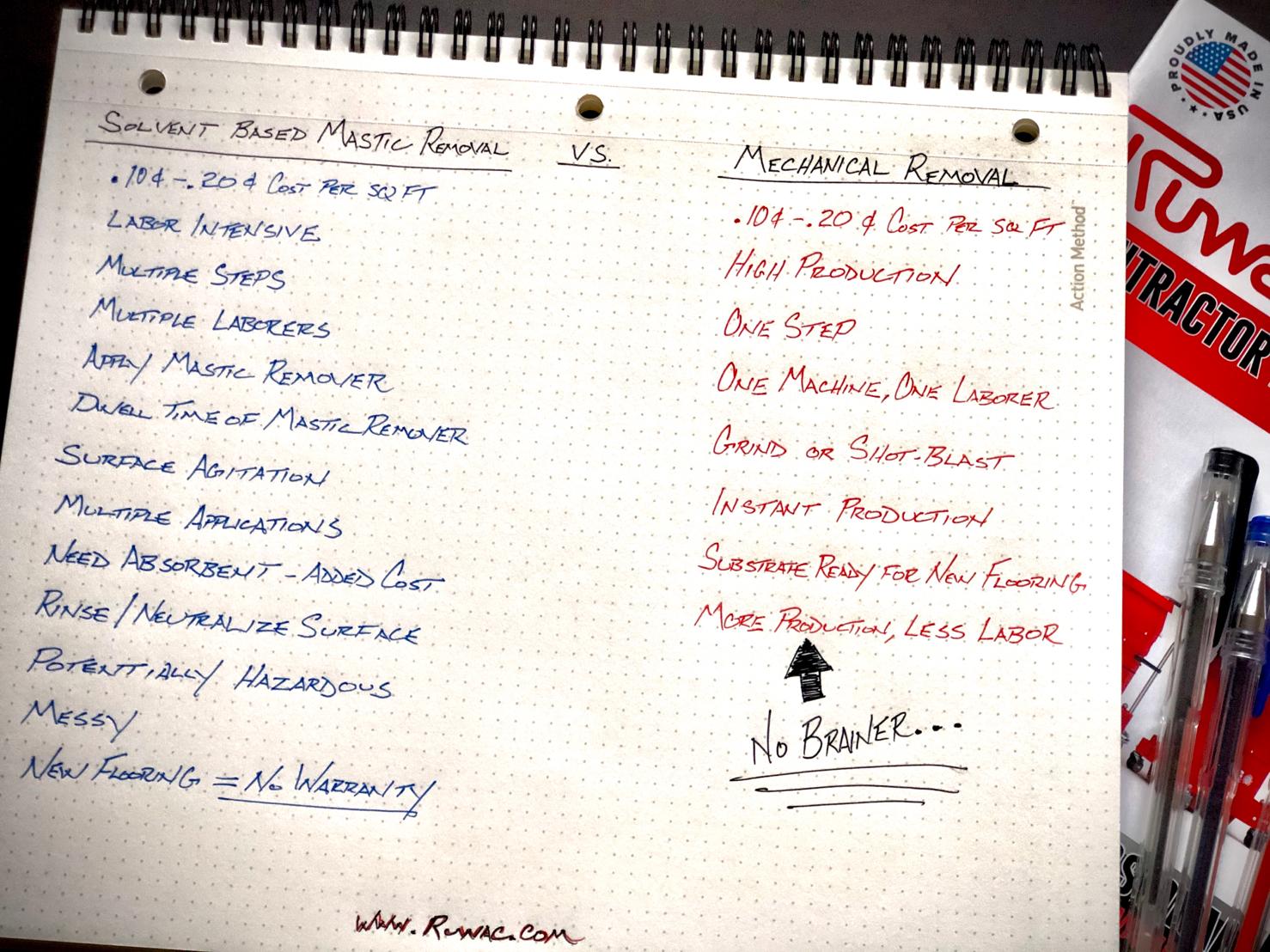Solvent based mastic removers have long been the industry standard for removal of asbestos containing glues. However, new and improved technology and mechanical processes along with HEPA filtered vacuum systems have brought glue removal into the 21st century.
Mastic removers are a functional method for removal and are available in many forms such as citrus or soy based and low odor. Although functional, solvent based mastic removal can be material and labor intensive, not to mention potentially odorous, hazardous, and flammable depending on the mastic remover being used.
Mastic removers typically require multiple steps in order to maximize the effectiveness of the removal. These steps include applying the mastic remover, dwell time, surface agitation, additional applications and most importantly the need to neutralize and clean the surface. If not neutralized and cleaned effectively solvent based removers and the residue they leave can have an adverse reaction leading to potential future flooring issues.
It is becoming more common for job sites to ban solvent based mastic removal and for the glue, floor covering, and overlay manufacturers to not warranty products installed over a floor that has used this method of removal.
New mechanical technology in the way of scraping, grinding and shot-blasting have quickly surpassed solvent based mastic removal as the leader in productive and safe glue removal.
When weighing the consumable cost between mastic removers and mechanical equipment, the cost per square foot is very similar, approximately .10 – .20 cents per square foot. The difference comes into play with a 1-2 step mechanical process that significantly reduces labor and increases production per hour.
Aside from just a labor savings and an increase in production the substrate will be left free of all contamination and have a proper surface profile to accept the new flooring.
When using a mechanical method, it is important to ensure a properly sized HEPA filtered vacuum is being used in conjunction with the point of source mechanical equipment.
So which vacuum should you use in your asbestos containing glue removal job? Here are some tips to make your job easier and safer than ever…
• Choose an industrial vacuum that can attach to your vacuum-assist grinders or shot-blasters. This will give you the peace of mind that fine dust will be removed directly from the point of source before it even has a chance at escaping into the open air.
• Filtration matters. To keep workers safe from breathing in harmful materials, use a vacuum with HEPA filtration.
• Look for an industrial vacuum that’s versatile. You’ll want a vacuum that’s powerful and efficient enough to pull off any point of source extraction, but also one that can be used for General Housekeeping to tidy up at the end of the job.
If you have any questions about selecting the best mechanical equipment and industrial vacuum for your application, Ruwac is always here to help (413)532-4030.
– The Ruwac Team



